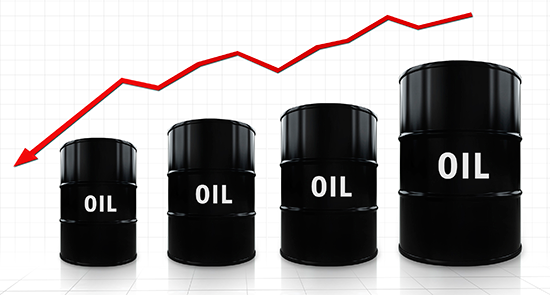
April-May 2015
10 Years in Print: Special Edition
------------------
|

BROWN ON GREEN: How Low Can It Go?
The price of crude oil has been in a steady decline lately. How low can it go? The short answer is nobody knows. Perhaps a short history of crude oil prices would be helpful. The price historically has been measured per 42-gallon barrel, a throwback to the early days of the oil industry, when crude oil was actually stored in barrels. Barrels haven’t been used in decades, but the
42-gallon measurement price continues to be used.
From 1946 to 1973, oil prices were extremely stable ranging from one to three dollars a barrel. In October 1973, the Organization of Arab Petroleum Exporting Countries (OAPEC, Arab members of OPEC) declared an embargo, refusing to sell oil to Canada, Japan, the Netherlands, Great Britain, and the United States. These countries had assisted Israel in the 1973 Yom Kippur War, when Egypt and Syria attacked Israel in an attempt to regain territory lost to Israel in the 1967 Six-Day War.
The embargo caused oil prices to jump to almost $12 a barrel overnight. Even though the embargo was lifted in March of 1974, oil continued to trade in the range of $10 to $15 a barrel for the next five years. In 1979, oil spiked again due to the Iranian revolution, which decreased global oil supply by 4%. This caused oil to rise again, from around $15 to almost $40 in less than a year. Following the spike, oil prices stabilized for the next five years at $30 to $40 a barrel.
In 1986, however, Saudi Arabia caused prices to drop dramatically when they began to pump more oil to capture market share. This caused oil to drop to around $13 a barrel and hurt the United States oil industry severely. For the next four years, oil prices stabilized at around $15 to $20 a barrel. A short-lived spike occurred in 1990 when Iraq invaded Kuwait, and oil spiked to $27 before settling again at $15 to $20, where it stayed for nine years.
From 2000 to 2014, the price of oil was based strictly on an economic principle of supply and demand. Prices steadily rose from around $20 a barrel in the early 2000s until spiking at $133 a barrel in 2008, before falling all the way to $39 in the depths of the Great Recession in 2009. The price spike in 2008 was the result of demands from China and other developing nations, before new developments in oil exploration began to meet the demand. After 2009, oil prices climbed steadily, peaking at over $100 in 2011. Oil traded between $80 and $100 until its last peak of $103 in May of 2014.
Today, we find ourselves in a similar situation to the one in 1986. OPEC has not cut production and, at the same time, the United States oil industry has developed new methods to dramatically increase oil production, driving prices down quickly. You could say that OPEC is playing an oily game of chicken with U.S. oil producers. OPEC knows it costs more to produce oil in the States than it does in their countries, and they are making a play for market share. Some OPEC countries are screaming that the price of oil has gone too low. These OPEC nations depend on oil revenues to run their governments and are exerting pressure to cut production in order to raise prices.
Some analysts believe we may see oil prices drop into the $30s before the market stabilizes. Others believe that a steady $50 to $70 price range will develop in the near future. One oil official
from Saudi Arabia recently said we may never see $100 oil again. I hope he’s right!
David Brown, CPA, became director of the Free Will Baptist Foundation in 2007. Send questions to David at david@nafwb.org. To learn how the Foundation can help you become a more effective giver, call 877-336-7575.
|
|

